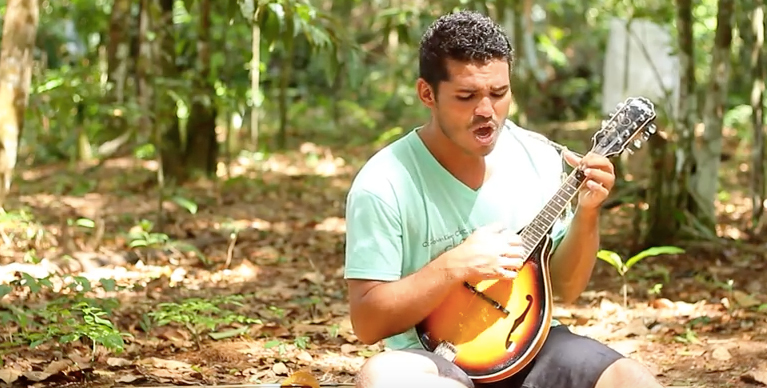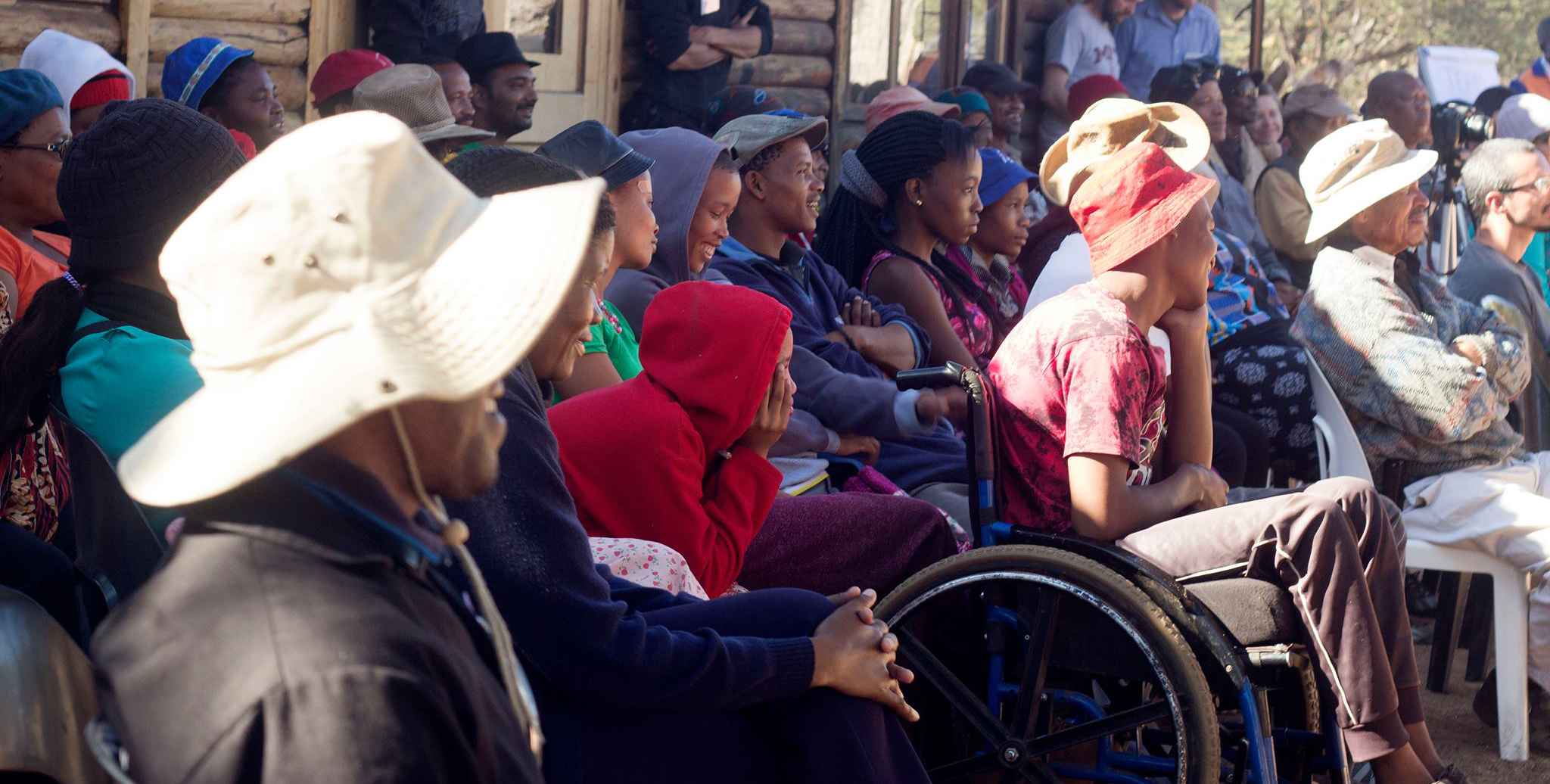Applying Human-Centered Design to Refugee Challenges in Dadaab, Kenya
In refugee communities, it can be difficult if not impossible to keep up with education at any age, particularly for adults and advanced learners. IDIN Network member Catherine Rakama recently began working with refugees in the largest camp in the world, Dadaab in Garissa County, Kenya, to build refugees’ skills in coding, app development, and human-centered design. We caught up with Catherine to learn more about her work.
Tell us a little bit about yourself — where are you from? What kind of work do you do? How did you first get involved with IDDS?
I’m a technology enthusiast and opportunist. I was born and raised in Kenya. I started doing software development as a hobby, but now as a profession. When I first dove into the software development world, I used to just develop software for the sake of it, but with time, exposure to trainings and experiences, I broadened my view of technology world. It wasn’t just about technology which I loved so much, it was also about human beings and coming up with solutions that met their needs and solved problems in their context.
One of the most impactful experiences for me was participating in the International Development Design Summit held in Lahore Pakistan earlier this year. I got to learn and practice important human-centered design concepts. It no longer made sense to have the skill and do less with it or build a technology that doesn’t meet the real need or improve the life of people in some way. That’s when I started designing and developing technology solutions for the good of humanity and not vendor-driven kind of solutions.
How did you get into working with refugees?
I’m part of the iHub community, a space that catalyzes the growth of the Kenyan technology community by connecting people and supporting start-ups. Through iHub, I heard about this project that Danish Refugee Council wanted to implement. I got interested because it involved working directly with the refugee community and I’ve always wanted to add value to my community. The human-centered design skills I gained at IDDS Lahore and software development skills that I had placed me at the right position for the task.
Tell us a bit about the workshops you’ve been running— what are the goals? Why are these skillsets important?
Currently, I run workshops for refugees in Dadaab Camps in Kenya, training them on computer skills as well as human-centered design concepts. Dadaab is the largest refugee complex in the world. It had been in the news often with Kenya’s vice president calling for its closure and worries about the humanitarian crisis that might result. Right now, repatriation is happening, but on a voluntarily basis because some refugees feel that they are ready to go back to their home country.
From the start, I knew the workshops could not all be about learning code. The students needed to understand problem-solving concepts see their world differently and that they become capable of solving some of the challenges facing them using technology.
With this understanding, learning mobile app development, product development process, and mobile business models would give them a tool they could make great use of even if repatriation happens. They will have a skill that they can not only use to solve a real world problem, but also earn a living out of it, thus support their families.
What have your workshop participants created during the trainings?
Despite various challenges of camp life, such as juggling between daily work and classes, the students still came for the sessions. The most rewarding moment was after they had learned how to identify and frame problems and carry out ideation the students came up with four applications and use the software development skills learnt to develop the solutions. Their solutions include:
RefLink: An app that would help them have continuous education despite infrastructure challenges and link up with experts in the same field of training to offer mentorship and advice concerning their business ideas or project that they would have pitched or proposed in the same platform. The app also integrates a link to possible funders and partners or connection to organizations that would want to offer incubation for the projects.
Mrefugee: With the repatriation process going on, this app enables refugees to do follow-ups to inquire about their repatriation status. Also, it is to help them access useful camp information on services and real time information concerning news within the camp as well as scholarship and job opportunities.
Mmarket: This is a market app that helps refugee retailers and business men and women buy and sell their products and connect to market efficiently by cutting down transportation costs and refugee movement challenges.
I was happy I knew they could now solve their problems and those of their communities in camp and back home.
My experience at IDDS Lahore has greatly influenced my outlook. I believe in participatory design… solving a challenge with the people experiencing it… seeing the problem through their eyes. The top-down approach that is often used by humanitarian aid organizations and governments often fails. At the very least it doesn’t give ownership to the users who are experiencing the problem. It leaves them feeling like helpless recipients on the receiving end. This is not a sustainable state of affairs.
What will you do next?
My plan is to create a network with refugees that I train and connect using online collaboration and communication tools. Most refugees in Dadaab have access to internet through computer labs in camps and some through smart phones so as to provide them with mentorship and advice as they work on their other solutions or advancing their skills.
My hope is that innovation centers can be set up in some of these camps to bring together those who are interested in innovation or have been exposed. I would love to do more to get a space where they can meet and work from, it doesn’t necessarily have to be a tech hub.
Beside the aforementioned, I’m in a network of very interesting people, people with whom I share the same goals. Every time I tell people what I do and some get to see what I do they usually want me on board to work on some idea that is to grow to a full-fledged start up. Currently, I’m a co-founder of two start-ups, Pretty Tight Security, a cyber-security company that provides identity, credentials and access management services to mitigate fraud and cyber-attacks at terminals. And one other that I will get to discuss about when the right time comes, it’s at incubation stage but it aims to solve postal addressing issue identified in Kenya.
I also work as a Chief Technology Officer of two start-ups, Msajili Mobiles, a start-up that aims to eliminate inefficiencies by providing digital forms connected to payment, and another that focuses on improving savings and credit cooperative organizations.
Do you have any advice for others running design trainings for social good? Other innovators?
My advice to anyone who would want to run design training for social good is to first understand the context. In my case, it was a refugee camp with different challenges such as security and movement operations. They should have a plan and be clear on deliverables, this helps to stay on track.
Then, they should work together with training facilitators to make sure that all the logistics have been taken care of, allocate responsibilities and delegate work to avoid being overwhelmed. And above all, they should make sure that the community that they will be working with is involved at important stages of the process.






